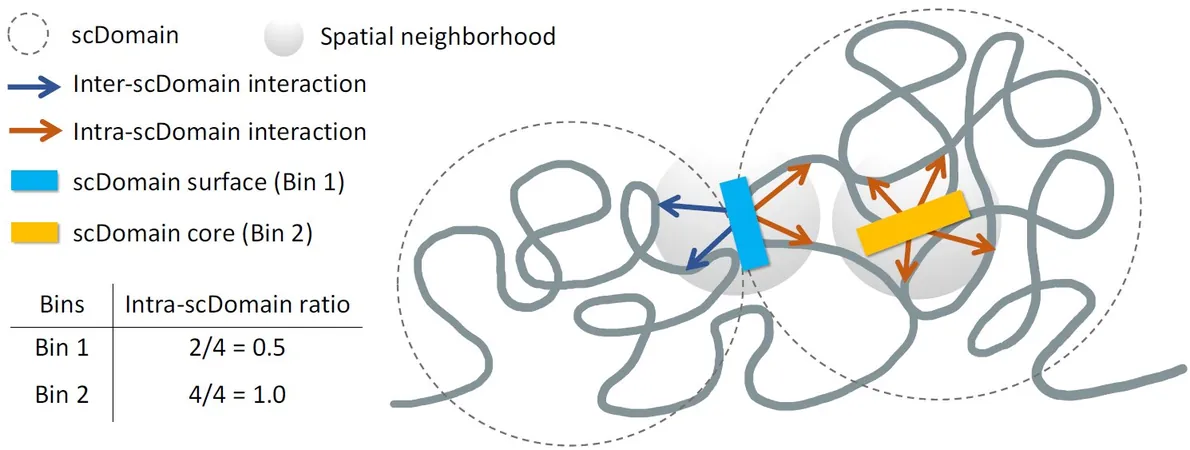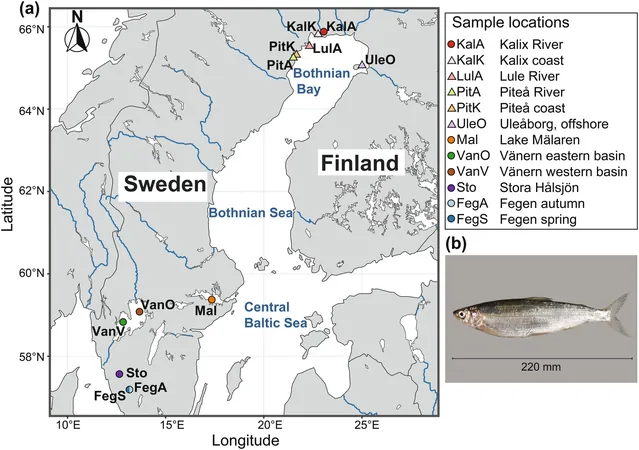
Unlocking the Secrets of Our Genes: The Surprising Impact of 3D Structure
2025-07-11
Author: John Tan
Revolutionizing Our Understanding of the Human Genome
Forget everything you thought you knew about DNA! While traditional biology classes present our genetic code in a flat, linear model, emerging research reveals the intricate 3D architecture that truly governs gene activity.
The Hidden Complexity of Chromatin
To squeeze into the tiny nucleus of our cells, six feet of DNA is meticulously wound around proteins called histones, forming structures known as chromatin. This coiled-up DNA has a seemingly chaotic design filled with loops and clumps, yet it plays a critical role by positioning certain genomic regions closer together while keeping others isolated.
3D Structure and Disease: A Causative Link
Scientists have discovered a shocking correlation between chromatin structure and various diseases, including developmental disorders and several types of cancer. For instance, nearly 12% of genomic regions in breast cancer cells show defects in their chromatin architecture, highlighting the potential dangers of these hidden genetic flaws.
New Findings from Sanford Burnham Prebys
On June 27, 2025, researchers from Sanford Burnham Prebys, alongside colleagues in Hong Kong, unveiled groundbreaking findings in Genome Biology. Their research introduces a novel method for probing the enigmatic 3D shape of chromatin and its profound influence on gene regulation.
The Secrets of Topologically Associating Domains (TADs)
Lead author Kelly Yichen Li, Ph.D., points out that specific regions of the genome frequently form configurations known as topologically associating domains (TADs). These domains enable parts of the genome to interact with each other much more frequently, while often isolating themselves from adjacent regions.
The Potato Analogy: Structure Matters!
Using detailed spatial mapping, researchers discovered that these TAD-like regions resemble irregular potatoes. Interestingly, they found that parts of the genome closer to the surface of these structures are more active, as they’re better positioned to receive biochemical signals within the nucleus. Yuk-Lap (Kevin) Yip, Ph.D., elaborated on this analogy, comparing the protection a potato's skin provides to its soft interior—signals promoting gene expression struggle to penetrate the core.
Quantifying 'Coreness' in Genomic Regions
To investigate this phenomenon, the team devised a way to gauge how 'central' a genomic region is within a chromatin domain. Their findings confirmed: the more central a region, the less active it is compared to those at the surface. This discovery could have significant implications for understanding gene activity and its relation to diseases across various cell types.
A Future of Discovery
The team is excited about the wealth of data available for studying the relationship between chromatin structure and gene activity. Yip and Li, in collaboration with Dr. Pier Lorenzo Puri's lab, aim to delve deeper into how these 3D structures influence muscle stem cell development and the unfolding mysteries of muscular dystrophy. A new horizon in genomic research is dawning!



 Brasil (PT)
Brasil (PT)
 Canada (EN)
Canada (EN)
 Chile (ES)
Chile (ES)
 Česko (CS)
Česko (CS)
 대한민국 (KO)
대한민국 (KO)
 España (ES)
España (ES)
 France (FR)
France (FR)
 Hong Kong (EN)
Hong Kong (EN)
 Italia (IT)
Italia (IT)
 日本 (JA)
日本 (JA)
 Magyarország (HU)
Magyarország (HU)
 Norge (NO)
Norge (NO)
 Polska (PL)
Polska (PL)
 Schweiz (DE)
Schweiz (DE)
 Singapore (EN)
Singapore (EN)
 Sverige (SV)
Sverige (SV)
 Suomi (FI)
Suomi (FI)
 Türkiye (TR)
Türkiye (TR)
 الإمارات العربية المتحدة (AR)
الإمارات العربية المتحدة (AR)